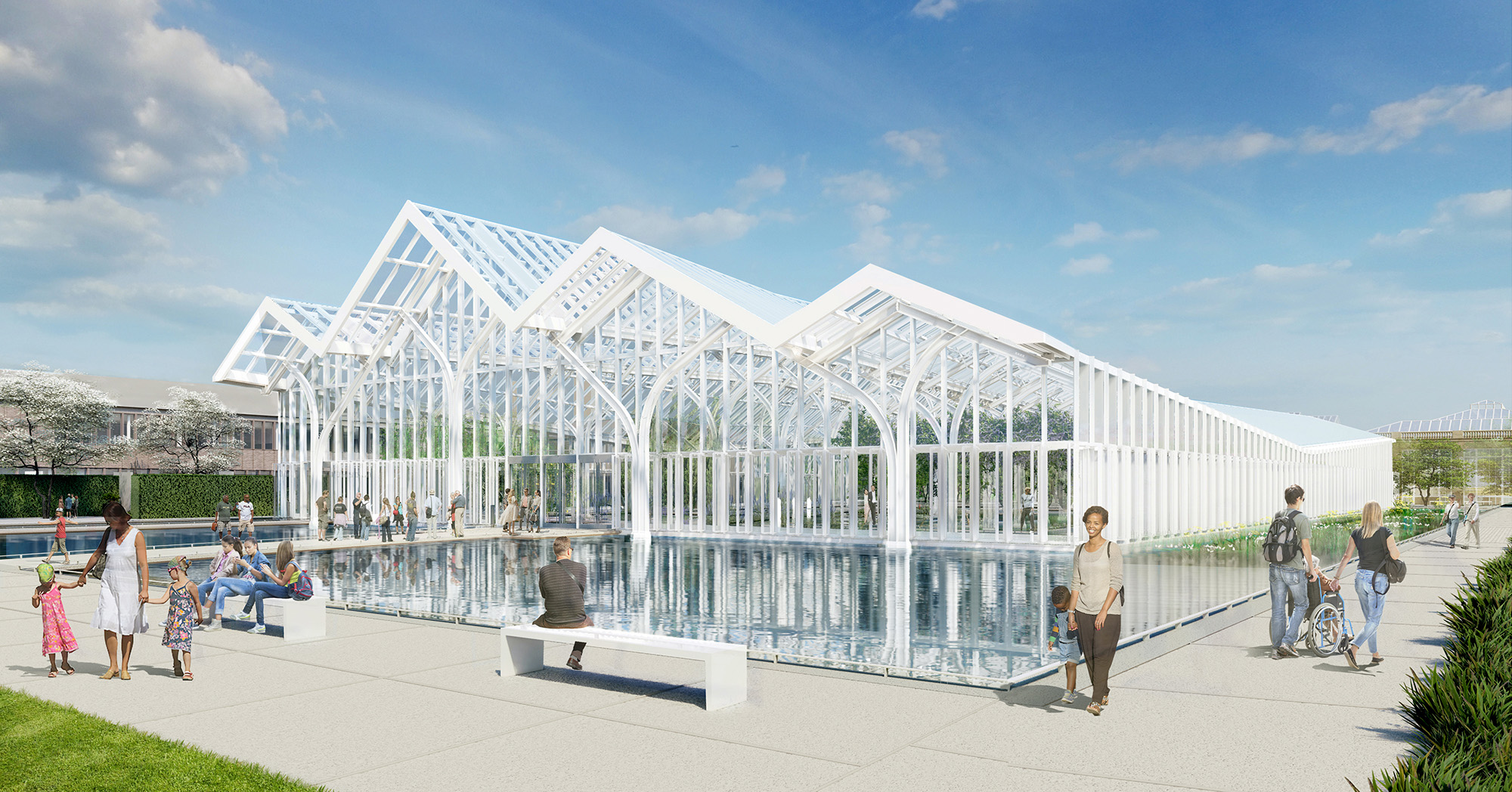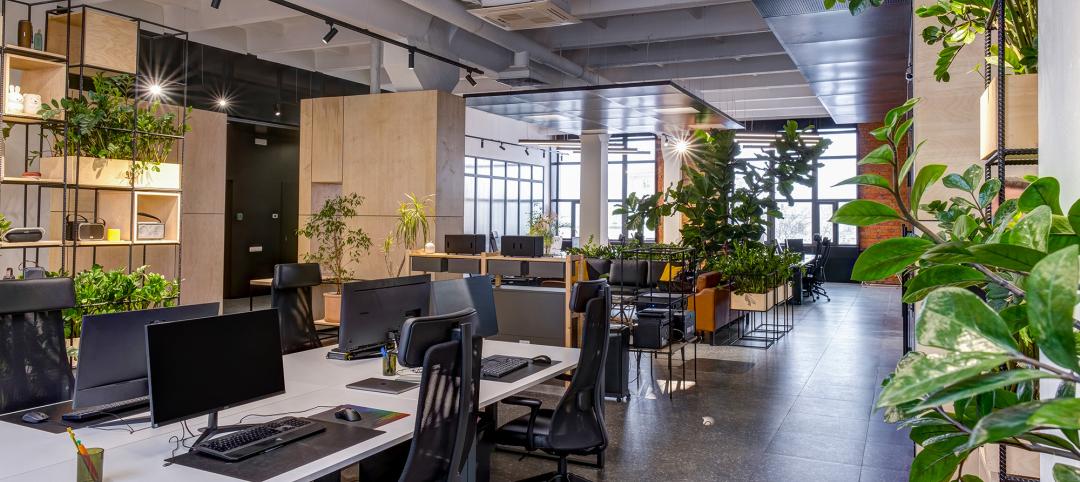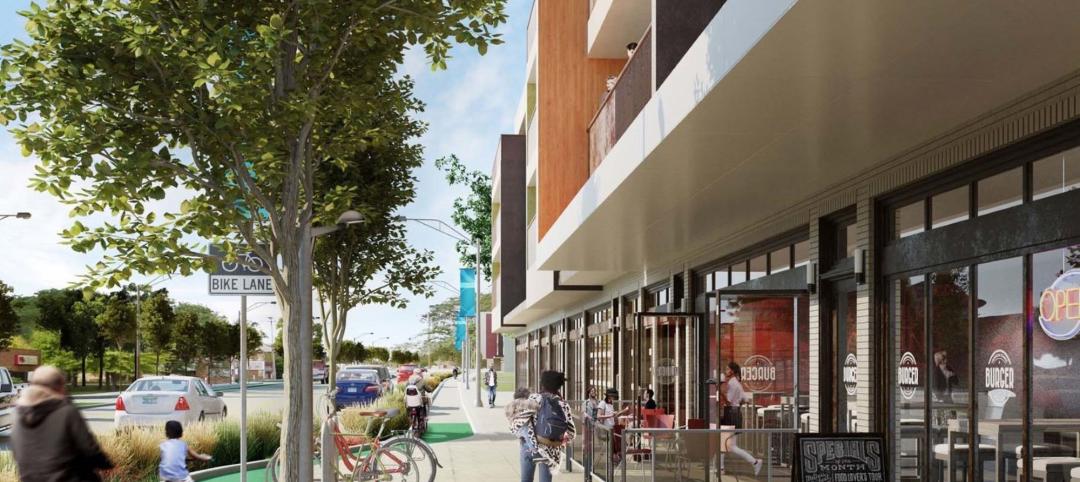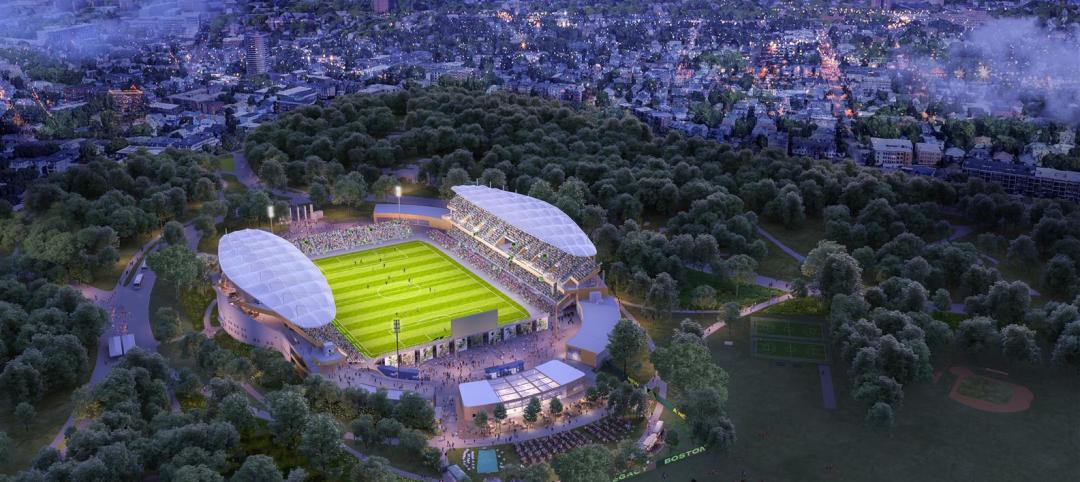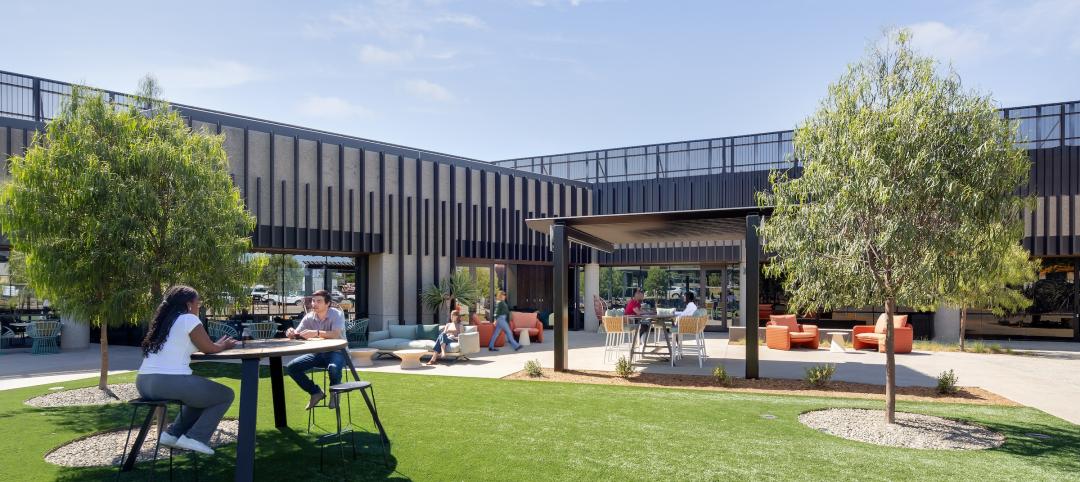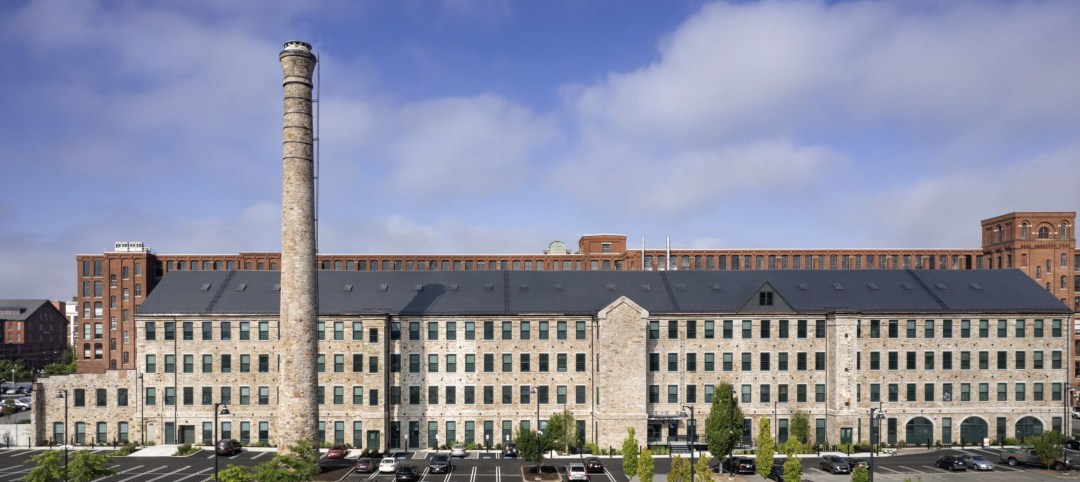Longwood Gardens announced this week that Longwood Reimagined: A New Garden Experience, the most ambitious revitalization in a century of America’s greatest center for horticultural display, will open to the public on November 22, 2024. The project, led by Weiss/Manfredi in collaboration with Reed Hilderbrand, looks to the future of Longwood Gardens, transforming 17 acres to enhance the visitor experience and to expand opportunities for exhibitions, programs, and events.
The heart of this transformation is a 32,000-sf conservatory designed by Weiss/Manfredi as a living and breathing glass house, with walls and roofs that open and close in response to the weather, featuring gardens, pools, and fountains designed by Reed Hilderbrand. The opening will be celebrated with two weeks of festivities, including member-only preview days and special events.
Marion Weiss and Michael Manfredi, principals of Weiss/Manfredi and lead designers of Longwood Reimagined, noted: “The natural beauty of Longwood inspired our commitment to create a dialogue between nature and architecture and the new conservatory is the centerpiece of a cinematic sequence of open and enclosed gardens. The relaxed geometries of the pleated conservatory roof and branching columns create tapered perspectives that link the informal geometries of the adjacent meadow with Longwood’s historic conservatories.”
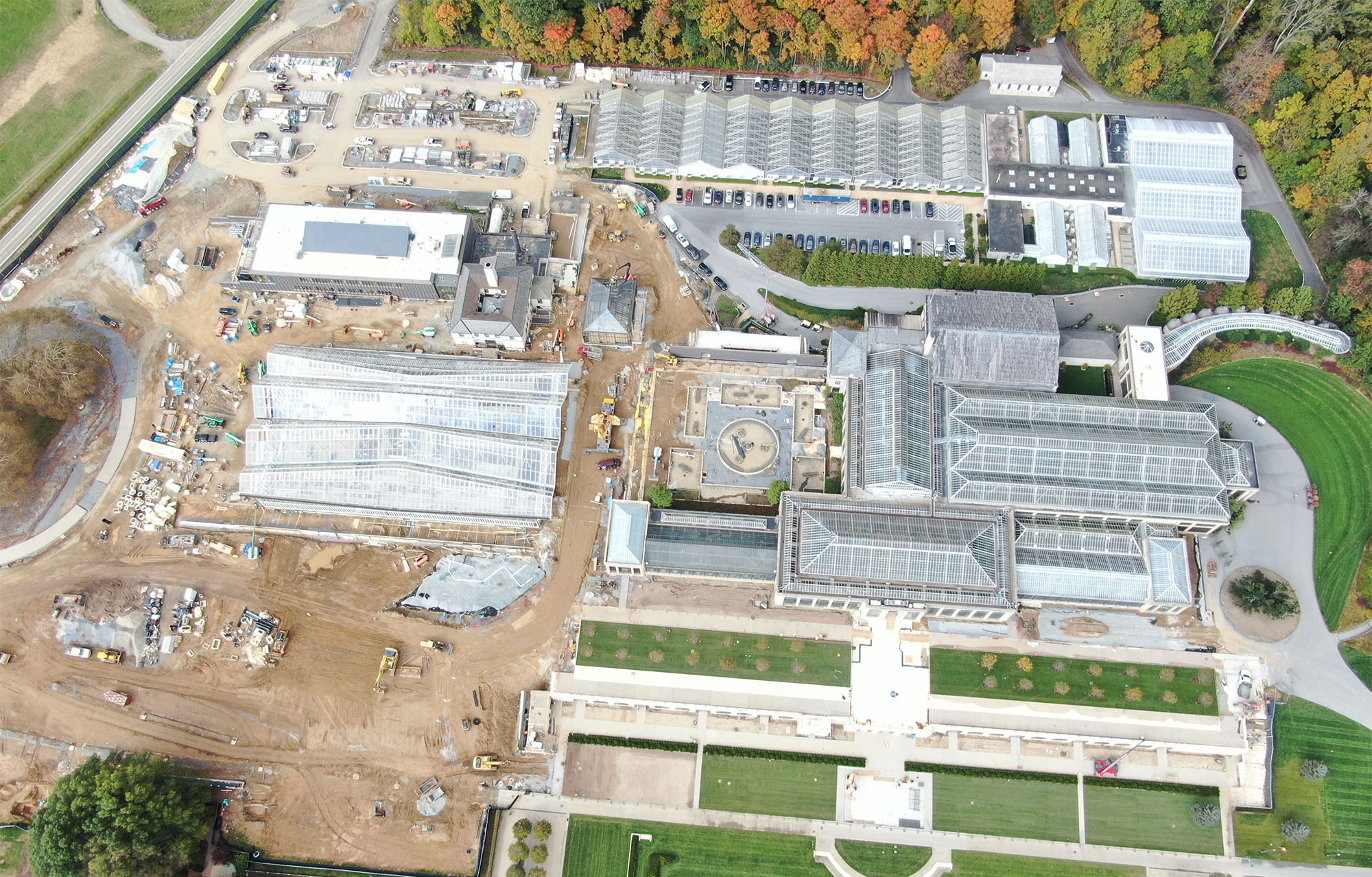
Conservatory Garden Planting to Begin this Spring
Planting of the new West Conservatory garden—comprised of 60 permanent plant species and a rotating selection of approximately 90 seasonal plant species—will begin this April. Reed Hilderbrand drew inspiration for this garden from the wild and cultivated landscapes of the Mediterranean ecozone, found in six regions of the world where alkaline soils predominate and water is precious. The Mediterranean garden composes drifts of tufted, low mounding plants with accents of dramatic plant forms that thrive in the characteristic hot, dry summers and cool, wet winters.
The palette for this tapestry-like garden design is extensive, including iconic plants from six geographic areas with a Mediterranean climate: the Mediterranean Basin, the Cape Region of South Africa, coastal California, Central Chile, Southwestern Australia, and South Australia. Agaves (Agave), Aloes (Aloe 'Johnson’s Hybrid’), Blueblossom (Ceanothus griseus var. horizontalis ‘Yankee Point’), and the tiny pink flowers of Pink Iceplant (Oscularia deltoides) will hug the ground of the West Conservatory.
Taller plants like Mediterranean Cypress (Cupressus sempervirens), Bay Laurel (Laurus nobilis), Willow Wattle (Acacia salicina), and mature Bismark Palm (Bismarckia nobilis) will rise dramatically in the soaring space.
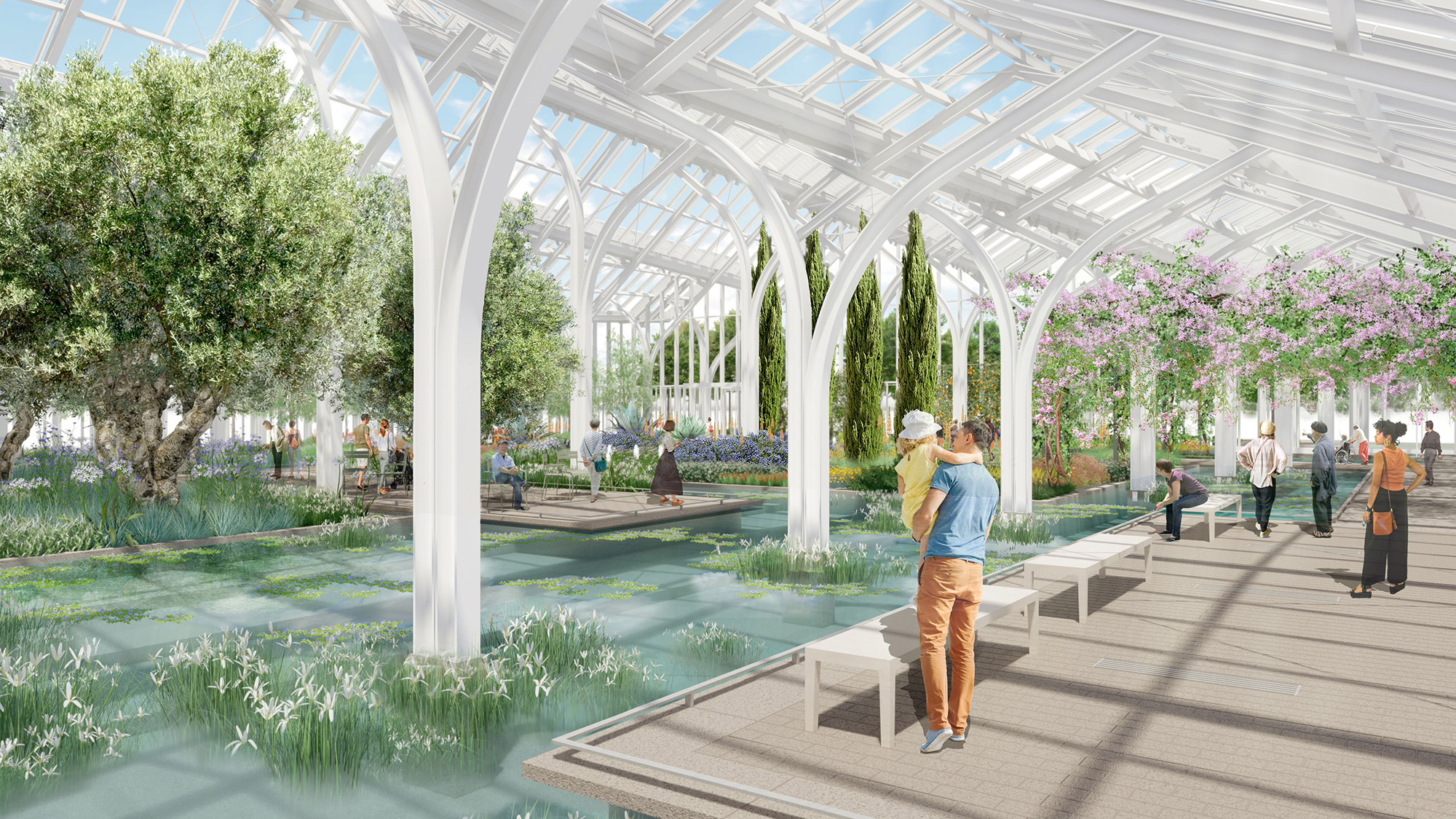
The Central Grove also begins planting this spring. Located adjacent to the revitalized Waterlily Court designed by Sir Peter Shepheard in 1989, it will serve as an entry to the new West Conservatory and relocated Cascade Garden. This space will feature 22 ginkgo trees (Ginkgo biloba ‘PNI 2720’ Princeton Sentry) with a carpet of Lenten-rose (Helleborus), nodding ladies’ tresses (Spiranthes cernua), and Christmas fern (Polystichum acrostichoides). The Central Grove, Waterlily Court, and 1906 restaurant, which overlooks the Main Fountain Garden, will open early to visitors on October 11.
Cascade Garden Reconstruction Underway
A key element of Longwood Reimagined is the relocation, preservation, and reconstruction of the Cascade Garden, designed by Roberto Burle Marx in 1992, into a new custom glasshouse designed by Weiss/Manfredi. Undertaken in consultation with Weiss/Manfredi, Reed Hilderbrand, Burle Marx Landscape Design Studio, and a panel of cultural landscape preservation experts convened by Longwood, this is the first time that a historic garden has been relocated.
“One of the highlights of my career was working with Mr. Burle Marx in 1992 on the original creation of the Cascade Garden,” said Sharon Loving, Chief Horticulture and Facilities Officer at Longwood. “It was like watching a magician work—he transformed a not very large space in an existing conservatory into an enchanting vertical environment with 16 waterfalls flowing into clear dark pools amidst climbing vines and stunning bromeliads. Thirty years later, the garden has outgrown that space and we’ve created a new glasshouse custom designed for its needs.”
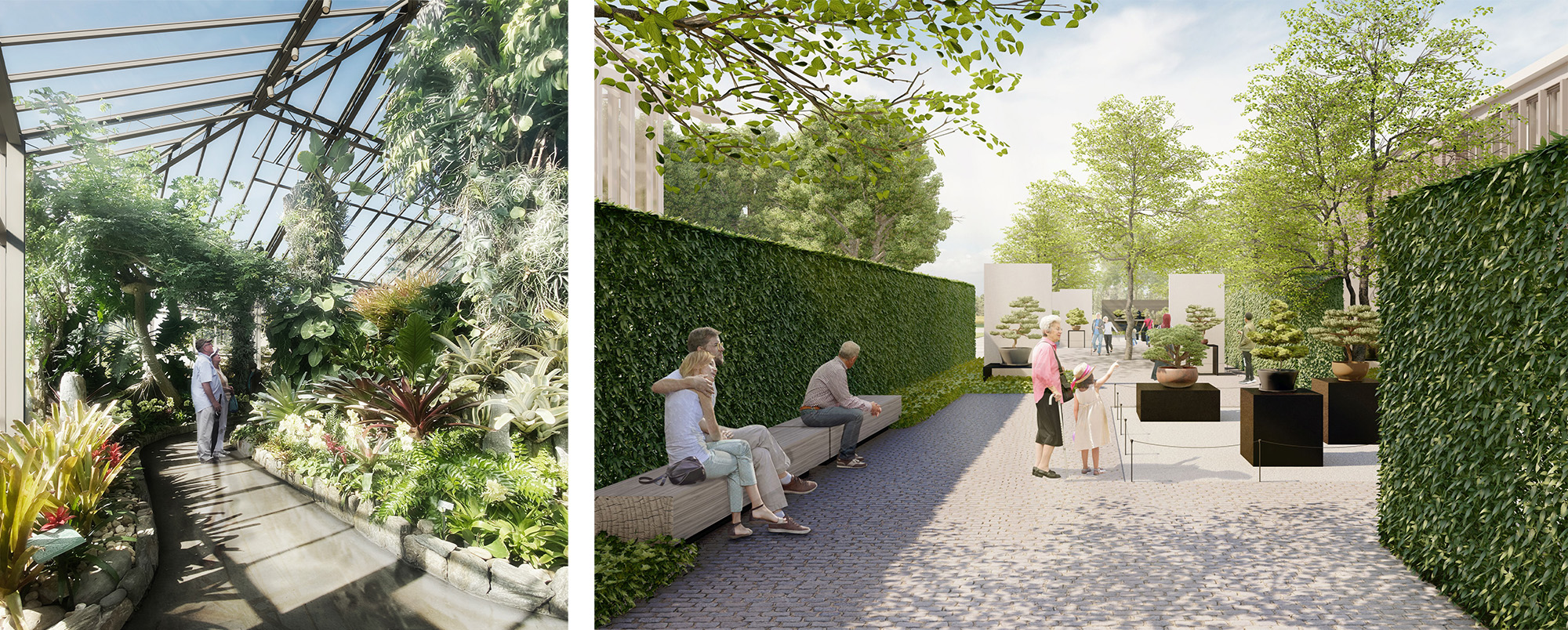
This spring, re-installation of the Burle Marx garden begins, including the resetting of hundreds of pieces of the original schist that clad planting beds and garden walls; installation of updated mechanical and fountain systems which will improve both climate control in the garden and its sustainability; and building the garden’s central path, which has been redesigned to meet Americans with Disabilities Act accessibility requirements without impacting the original intent of the historic garden.
Early this summer, many of the plants will be relocated from their temporary home back into the Cascade Garden and new plants will be added to complete the tropical rainforest experience originally conceived by Burle Marx. From its new home, the garden restates for this generation Burle Marx’s 1992 call to preserve rainforests threatened worldwide.
Other Elements Continue to Move Forward
Other elements of the Longwood Reimagined project are continuing or nearing completion, including construction of The Grove, a new education and administration building with a state-of-the-art library and classrooms, with interior finishing work underway.
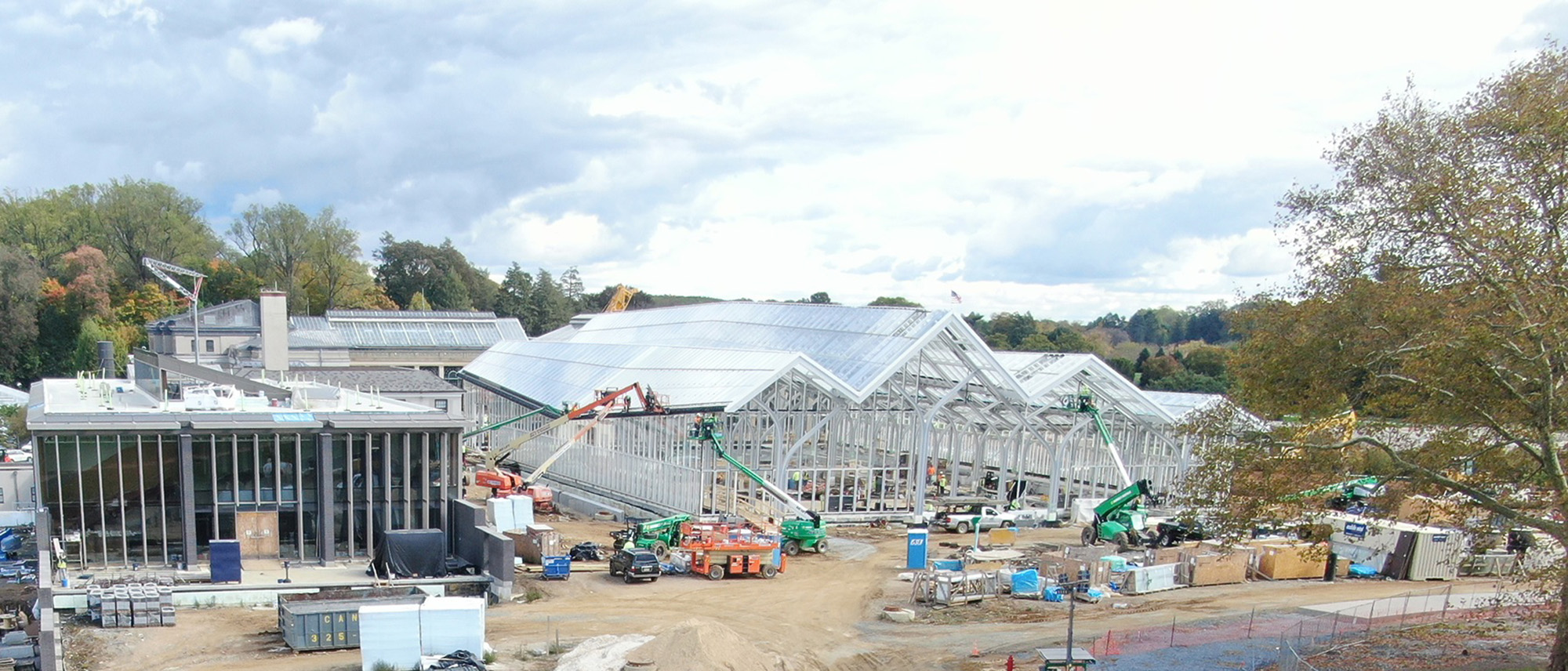
The Potting Shed, which will house the Bonsai Workshop for Longwood’s notable bonsai collection, began its renovation this winter. The collection of bonsai will rotate through the new outdoor Bonsai Courtyard, designed by Reed Hilderbrand, which will create a gallery-like environment to appreciate specimens of rare Japanese tree species including kicho bonsai—Important Bonsai Masterpieces, so called because of their beauty or rarity.
The new Conservatory Terrace Overlook and Lower Conservatory Plaza will open on May 9, when Longwood’s storied Main Fountain Garden resumes performances for the summer season. The Overlook and Plaza form part of an important new east-west promenade that unites buildings and landscapes, from lush formal gardens to views over open meadows into a cohesive landscape.
On the Building Team
Owner/Developer: Longwood Gardens
Architect: Weiss/Manfredi
Landscape architect: Reed Hilderbrand
GC: Bancroft Construction
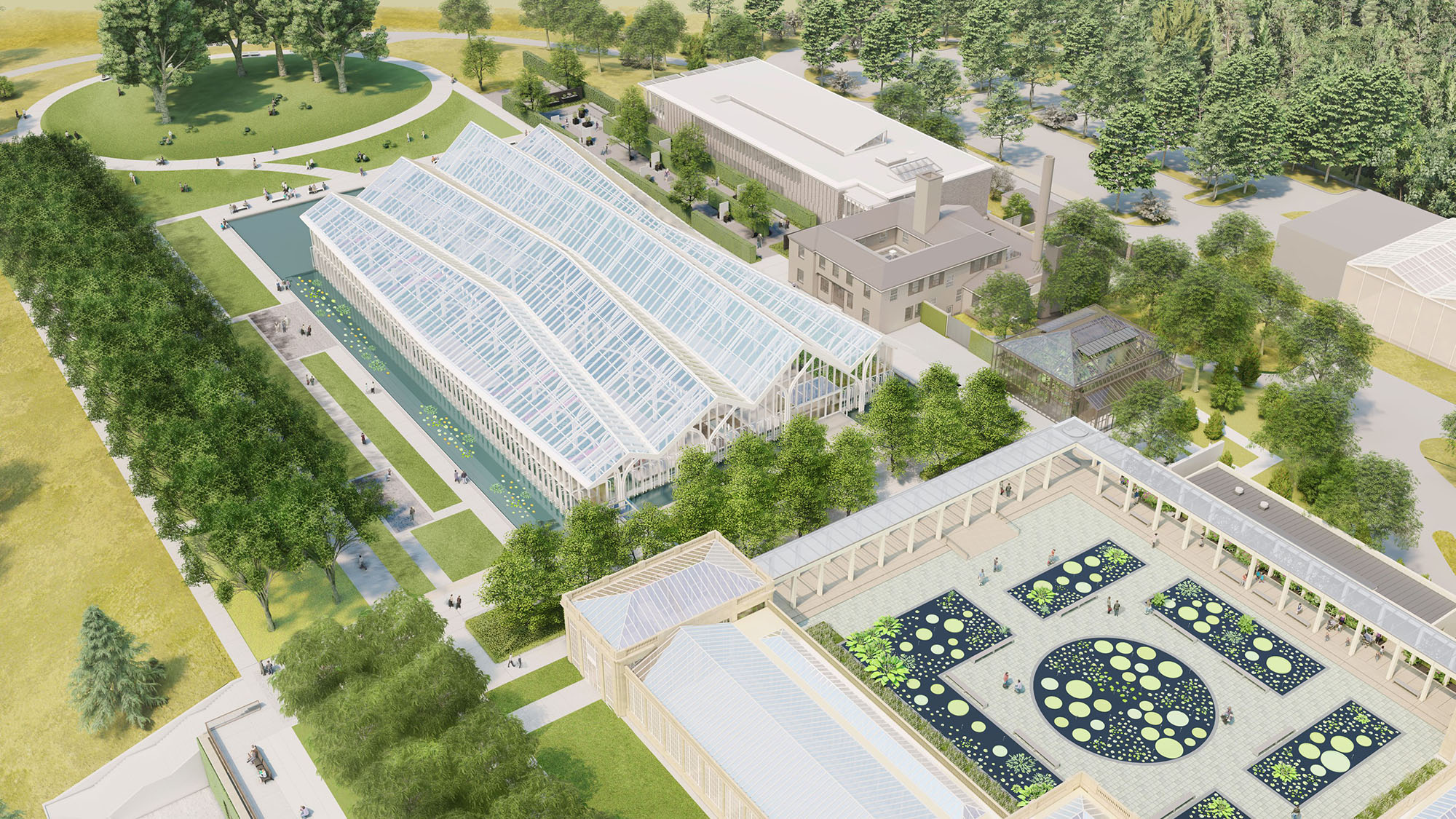
Related Stories
Urban Planning | Oct 30, 2024
Bridging the gap: How early architect involvement can revolutionize a city’s capital improvement plans
Capital Improvement Plans (CIPs) typically span three to five years and outline future city projects and their costs. While they set the stage, the design and construction of these projects often extend beyond the CIP window, leading to a disconnect between the initial budget and evolving project scope. This can result in financial shortfalls, forcing cities to cut back on critical project features.
MFPRO+ New Projects | Oct 30, 2024
Luxury waterfront tower in Brooklyn features East River and Manhattan skyline views
Leasing recently began for The Dupont, a 41-story luxury rental property along the Brooklyn, N.Y., waterfront. Located within the 22-acre Greenpoint Landing, where it overlooks the newly constructed Newtown Barge Park, the high-rise features East River and Manhattan skyline views along with 20,000 sf of indoor and outdoor communal space.
Libraries | Oct 30, 2024
Reasons to reinvent the Midcentury academic library
DLR Group's Interior Design Leader Gretchen Holy, Assoc. IIDA, shares the idea that a designer's responsibility to embrace a library’s history, respect its past, and create an environment that will serve student populations for the next 100 years.
Resiliency | Oct 29, 2024
Climate change degrades buildings slowly but steadily
While natural disasters such as hurricanes and wildfires can destroy buildings in minutes, other factors exacerbated by climate change degrade buildings more slowly but still cause costly damage.
Office Buildings | Oct 29, 2024
Editorial call for Office Building project case studies
BD+C editors are looking to feature a roundup of office building projects for 2024, including office-to-residential conversions. Deadline for submission: December 6, 2024.
Healthcare Facilities | Oct 28, 2024
New surgical tower is largest addition to UNC Health campus in Chapel Hill
Construction on UNC Health’s North Carolina Surgical Hospital, the largest addition to the Chapel Hill campus since it was built in 1952, was recently completed. The seven-story, 375,000-sf structure houses 26 operating rooms, four of which are hybrid size to accommodate additional equipment and technology for newly developed procedures.
Multifamily Housing | Oct 28, 2024
A case for mid-rise: How multifamily housing can reshape our cities
Often referred to as “five-over-ones,” the mid-rise apartment type is typically comprised of five stories of apartments on top of a concrete “podium” of ground-floor retail. The main criticism of the “five-over-one” is that they are often too predictable.
Sports and Recreational Facilities | Oct 24, 2024
Stadium renovation plans unveiled for Boston’s National Women’s Soccer League
A city-owned 75-year-old stadium in Boston’s historic Franklin Park will be renovated for a new National Women’s Soccer League team. The park, designed by Fredrick Law Olmsted in the 1880s, is the home of White Stadium, which was built in 1949 and has since fallen into disrepair.
Laboratories | Oct 23, 2024
From sterile to stimulating: The rise of community-centric life sciences campuses
To distinguish their life sciences campuses, developers are partnering with architectural and design firms to reimagine life sciences facilities as vibrant, welcoming destinations. By emphasizing four key elements—wellness, collaboration, biophilic design, and community integration—they are setting their properties apart.
Adaptive Reuse | Oct 22, 2024
Adaptive reuse project transforms 1840s-era mill building into rental housing
A recently opened multifamily property in Lawrence, Mass., is an adaptive reuse of an 1840s-era mill building. Stone Mill Lofts is one of the first all-electric mixed-income multifamily properties in Massachusetts. The all-electric building meets ambitious modern energy codes and stringent National Park Service historic preservation guidelines.


